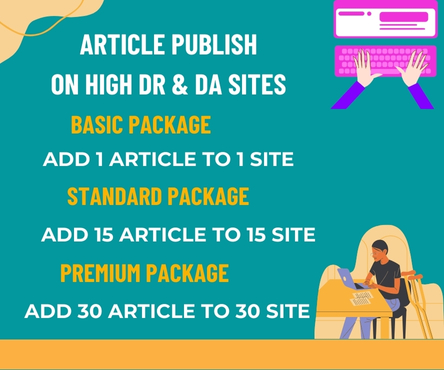When it comes to choosing the right dog food, the debate between chicken-based and chicken-free options is significant, especially for pet owners concerned about allergies and dietary needs. Understanding when to make the switch can help ensure your dog remains healthy and happy. food for puppies Petstation
Understanding Chicken Allergies in Dogs
Many dogs can develop allergies to chicken, which is one of the most common protein sources in commercial dog foods. Symptoms of chicken allergies may include itching, skin irritations, gastrointestinal issues, and ear infections. If you notice any of these signs, it may be time to consider a chicken-free diet.
Benefits of Chicken-Free Dog Food
- Reduced Allergic Reactions: Switching to chicken-free dog food can alleviate symptoms in dogs with chicken allergies. By eliminating chicken, you reduce the risk of triggering allergic reactions.
- Diverse Protein Sources: Chicken-free dog foods often include alternative protein sources such as fish, lamb, or plant-based proteins. This variety can provide a more balanced diet and ensure your dog receives essential nutrients.
- Improved Digestion: Some dogs may find it easier to digest alternative proteins. Chicken-free diets can lead to better digestion and fewer gastrointestinal issues.
- Weight Management: Certain chicken-free dog foods are formulated to be lower in calories and fat, which can be beneficial for dogs that need to lose weight or maintain a healthy weight.
- Enhanced Flavor Options: Many chicken-free dog foods come in unique flavors that can be more appealing to picky eaters. This can make mealtime more enjoyable for your dog.
When to Make the Switch
If you suspect your dog has a chicken allergy or if they show signs of discomfort after eating chicken-based food, it’s advisable to consult your veterinarian. They can help determine if a switch to chicken-free food is necessary. Additionally, if your dog has been diagnosed with a food allergy, transitioning to a chicken-free diet is often recommended.
How to Transition to Chicken-Free Dog Food
Transitioning your dog to a new diet should be done gradually to avoid digestive upset. Start by mixing a small amount of the new chicken-free food with their current food, gradually increasing the proportion of the new food over a week or two. Monitor your dog’s reaction during this period, paying attention to any changes in behavior or health.
Conclusion
Choosing between chicken and chicken-free dog food is an important decision that can significantly impact your dog’s health. If your dog shows signs of a chicken allergy or if you’re looking for a more diverse diet, switching to chicken-free options may be beneficial. Always consult with your veterinarian to ensure the best dietary choices for your furry friend.
Chicken-Free vs. Chicken Dog Food: When to Make the Switch
When it comes to selecting the right dog food, the choice between chicken-based and chicken-free options is crucial, particularly for pet owners concerned about allergies and dietary requirements. Understanding when to make the switch can help ensure your dog remains healthy and happy.
Understanding Chicken Allergies in Dogs
Many dogs can develop allergies to chicken, which is one of the most common protein sources in commercial dog foods. Symptoms of chicken allergies may include:
- Itching and skin irritations
- Gastrointestinal issues such as vomiting or diarrhea
- Ear infections or chronic ear problems
- Lethargy or behavioral changes
If you notice any of these signs, it may be time to consider a chicken-free diet.
Benefits of Chicken-Free Dog Food
- Reduced Allergic Reactions: Switching to chicken-free dog food can alleviate symptoms in dogs with chicken allergies. By eliminating chicken, you reduce the risk of triggering allergic reactions.
- Diverse Protein Sources: Chicken-free dog foods often include alternative protein sources such as fish, lamb, or plant-based proteins. This variety can provide a more balanced diet and ensure your dog receives essential nutrients.
- Improved Digestion: Some dogs may find it easier to digest alternative proteins. Chicken-free diets can lead to better digestion and fewer gastrointestinal issues.
- Weight Management: Certain chicken-free dog foods are formulated to be lower in calories and fat, which can be beneficial for dogs that need to lose weight or maintain a healthy weight.
- Enhanced Flavor Options: Many chicken-free dog foods come in unique flavors that can be more appealing to picky eaters. This can make mealtime more enjoyable for your dog.
When to Make the Switch
If you suspect your dog has a chicken allergy or if they show signs of discomfort after eating chicken-based food, it’s advisable to consult your veterinarian. They can help determine if a switch to chicken-free food is necessary. Additionally, if your dog has been diagnosed with a food allergy, transitioning to a chicken-free diet is often recommended.
How to Transition to Chicken-Free Dog Food
Transitioning your dog to a new diet should be done gradually to avoid digestive upset. Here’s how to do it:
- Start Slowly: Begin by mixing a small amount of the new chicken-free food with their current food.
- Gradual Increase: Over a week or two, gradually increase the proportion of the new food while decreasing the old food.
- Monitor Reactions: Keep an eye on your dog’s reaction during this period, paying attention to any changes in behavior or health.
Conclusion
Choosing between chicken and chicken-free dog food is an important decision that can significantly impact your dog’s health. If your dog shows signs of a chicken allergy or if you’re looking for a more diverse diet, switching to chicken-free options may be beneficial. Always consult with your veterinarian to ensure the best dietary choices for your furry friend.Bookmark messageCopy messageExport

